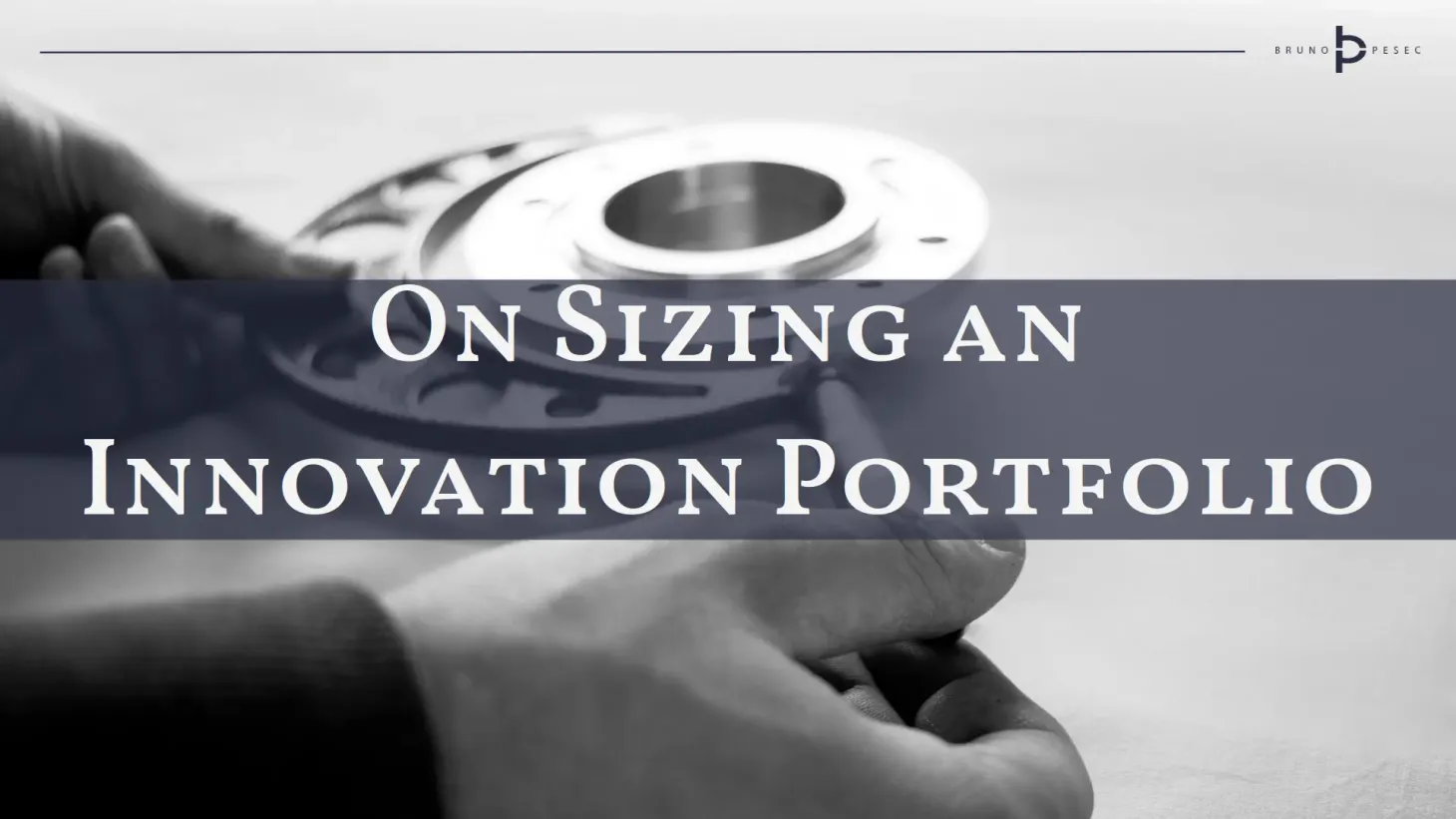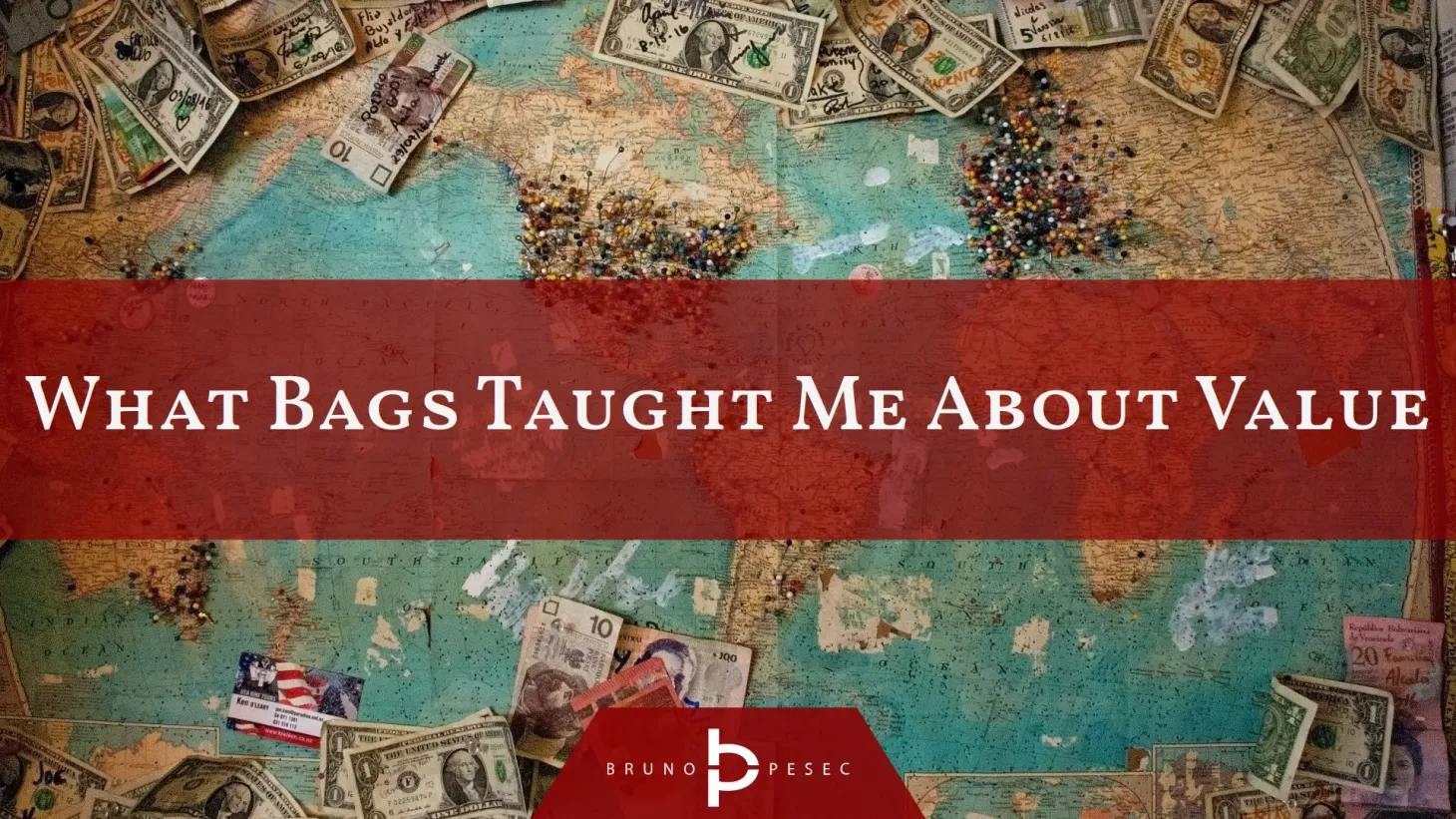Making sense of innovation pipelines, funnels, and portfolios
What is the difference between innovation pipeline, innovation funnel, and innovation portfolio? And more importantly, does it even matter?
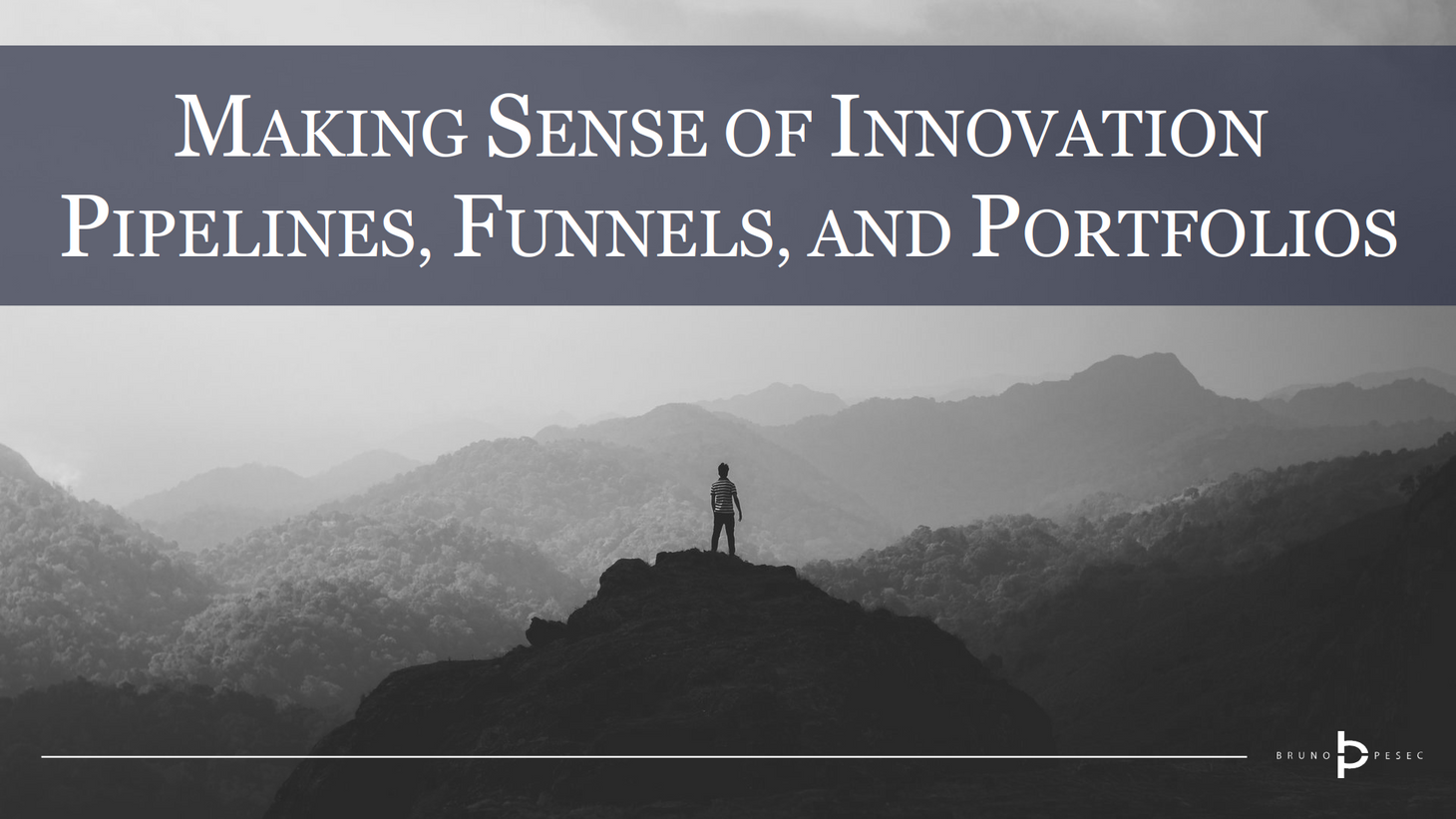
If you have heard of innovation pipeline, innovation funnel, and innovation portfolio, you might have wondered—what is the difference? And more importantly, does it matter, or is it about semantics?
That’s exactly what I want to address in this article.
Visual tools for managing innovation
Let’s start with what all three have in common: they offer you a way to visualise your innovation initiatives. They can show some—or all—of your initiatives. For example, you might decide to only show transformative and disruptive innovations. Alternatively, you could decide to show a whole range of initiatives, spanning from core to adjacent to transformational.
I am a big fan of using visuals to stimulate better thinking. To that point, I offer a simple visualisation of all three concepts:
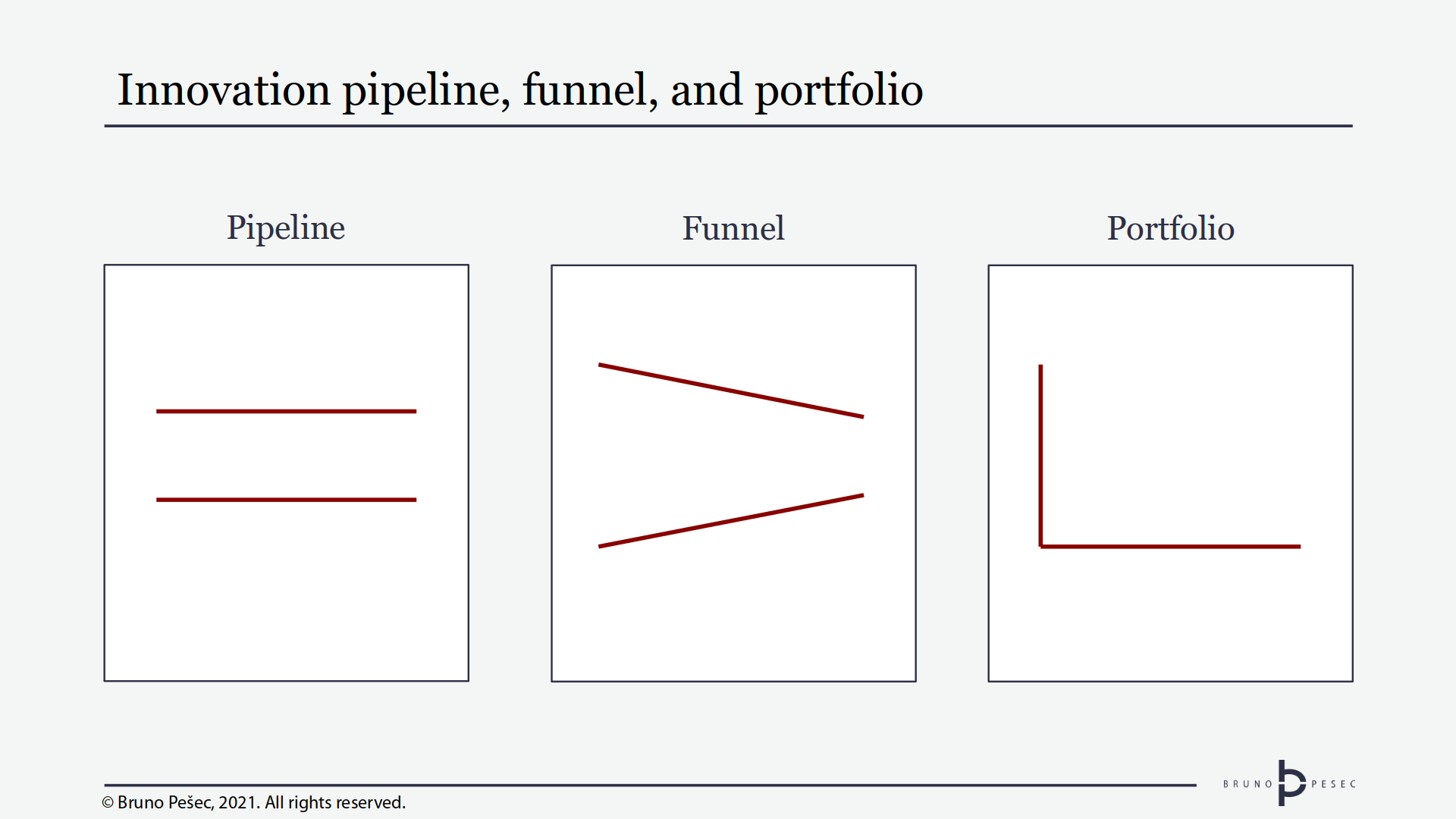
Now, let’s address the differences.
One- and two-dimensional view of innovation initiatives
Looking at the illustration above, notice how both pipeline and funnel are one-dimensional. They usually depict progress or maturity of an idea (or a group of ideas) through defined stages (or phases if you don’t like that word).
Common frameworks that are mapped to this dimension are the “four stages of innovation” (which consists of business modelling, problem–solution fit, product–market fit, and scale), and the “product life cycle” (which consists of market development, market growth, market maturity, and market decline).
The latter framework is especially useful for corporate innovators, especially with few minor tweaks. One of the big mistakes I often observe are innovation teams that spend insufficient time in the market development stage. Most often they believe that their idea is so obviously good no customer could say no to it. Unfortunately for them, customers rarely abide.
That is a great way to make your innovation much more expensive than it should be. Hence, I suggest you take a more granular view of the market development, and divide it into market exploration, market validation, and market audition. Doing so also help with keeping innovation teams accountable.
Unlike the pipeline and funnel, innovation portfolio is two-dimensional at the very minimum. It serves like a map of your initiatives, showing you where they stand in terms of your two selected dimensions. My preferred view is with the product life cycle on the horizontal axis, and innovation type on the vertical axis.
That provides at-glance information about organisation’s priorities, and their likelihood of protecting the present and ensuring the future. And that serves as a perfect tie in for my next point.
Strategic and tactical view of your innovation initiatives
Innovation portfolio is a strategic tool, while pipeline and funnel are tactical. The former is for the big picture, long-term health check, and achieving strategic objectives, while the latter are for daily operations, ensuring the velocity of ideas, and keeping track of the innovation teams.
To illustrate the difference, I offer some of the questions I’d be asking when working with the innovation pipeline or funnel:
- How is this innovation team doing?
- What have they done?
- What are they about to do next?
- What’s the status of their idea?
- How much hours have they spent so far?
- What have they learned so far?
- How strong is the evidence they’ve collected so far?
And here are some questions I’d be asking when working with the innovation portfolio:
- How are all these initiatives related to the organisation’s strategic objectives?
- To which and how does each specific initiative contribute to a specific strategic objective?
- Is this the right mix of initiatives to create a better future for the organisation?
- Is this the right mix of initiatives given our current competition?
- Are we over- or under-investing in any specific initiative?
In the innovation accounting book we address in great detail how to measure innovation at a tactical, managerial, and strategic level.
A pipeline or a funnel?
When working with business leaders and executives, I often hear them using innovation pipeline and innovation funnel interchangeably. So, let me ask you—would you be happy if you came home and found it flooded due to a leaky pipe?
Nobody wants a defective, leaky pipeline. And yet, when it comes to innovation we cannot expect that every idea will go from ideation to a profitable product, service, or venture. Even worse, we should not try to nurture absolutely every idea—and especially not those that cannot get any traction in the market.
I often say that words do matter. How we talk about things influences how we go and act about them as well. That’s why I strongly prefer to talk solely about innovation funnel. Funnelling evokes the images of narrowing, and of entry and exit points with different size. We do want attrition over time—as long as it is based on informed decision and evidence collected through lean experimentation—and not on egos, zebras, and hippos.
On the relationship between innovation funnel and innovation portfolio
Following everything above, you should use both innovation funnel and innovation portfolio since that will enable you to have a wholesome grasp of your innovation initiative—from the nitty-gritty to the big picture—without duplicating effort.
But you must make one important decision: do you want to use them sequentially or parallely?
Again, I offer a simple illustration of the difference:
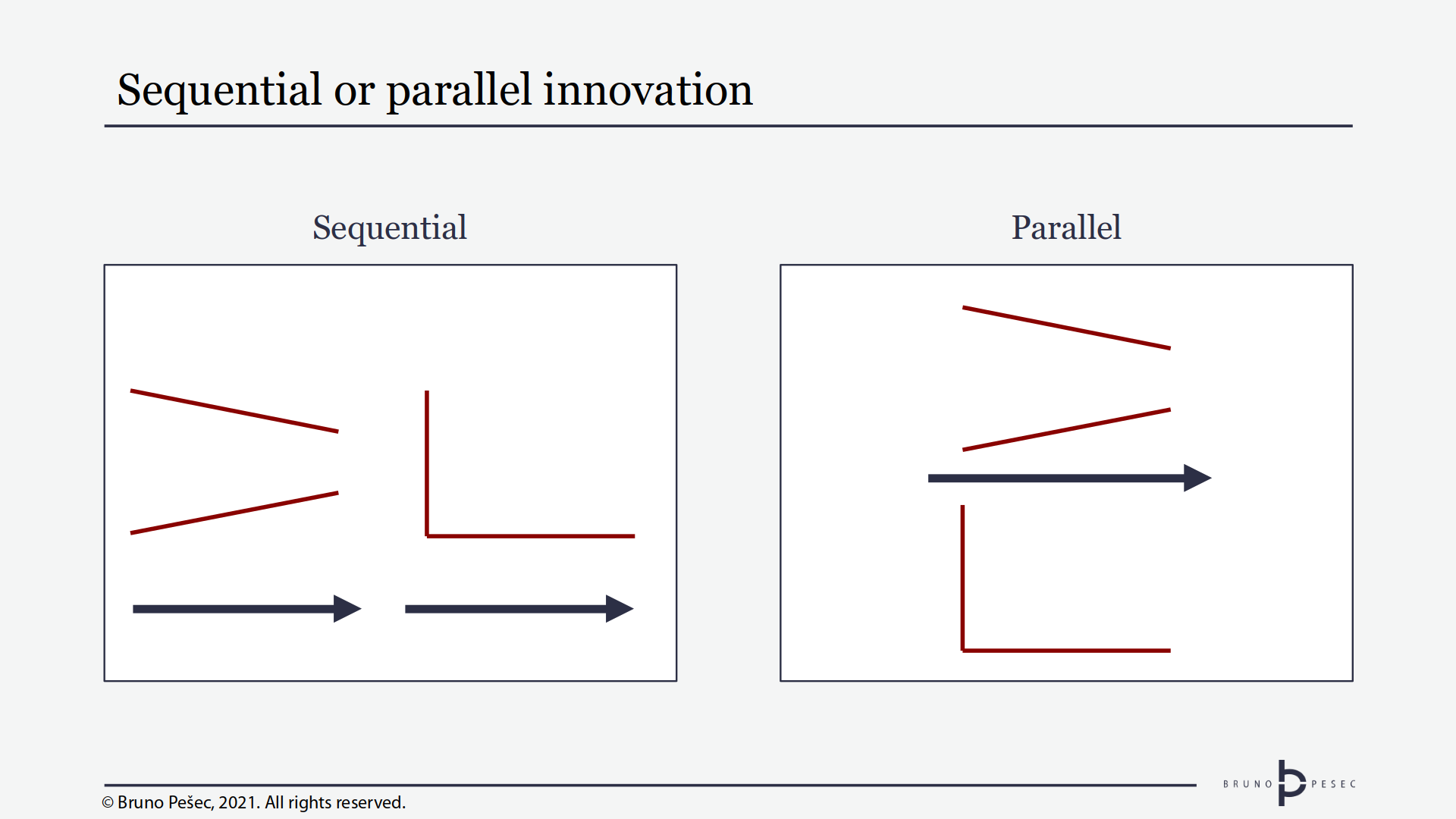
Sequential process means that the innovation initiative or idea must successfully exit from the funnel before it is “allowed” into the portfolio. An example would be an innovation funnel that ends with the “scale” or “market growth” stage, meaning that any initiative that comes to an end has in essence transformed into a new and profitable business unit or division. From there on, it is tracked in the portfolio.
The benefit of this approach is that you end up with more stable and less cluttered portfolio. The disadvantage is that you might have initiative that are in the funnel for several years, meaning that they might not get proper strategic attention—until the moment they are “suddenly” terminated. Remember that truly transformative and disruptive ideas don’t go from idea to scale in three weeks. Heck, sometimes it takes more than five years!
In the parallel process innovation funnel and innovation portfolio share a single dimension, meaning that all initiative are present in both views. Shared dimension is usually the above discussed progress or maturity.
Downside of such approach is a cluttered portfolio that needs to be regularly refreshed. Since the early-stage initiative should be progressing much faster than more mature ones, that means that the portion of portfolio which shows them will have to be updated more frequently. The benefit is that you have a total overview of investments and their potential. It’s difficult to hide when all is so visible. (Depending on your corporate culture, the latter might be considered to be a downside as well.)
Now, I want to stress that both sequential and parallel views are good. You’ll be ahead of competition by adopting either of them. But I must warn you that these two views cannot exist at the same time, and if you try to implement them concurrently, then they will clash with each other—as well as the departments trying to implement them. While both view are useful, they are different in how ideas and innovation initiatives are viewed, developed, followed-up on, and how is accountability ensured.
Pick one and stick with it.
Creating your own innovation funnel and innovation portfolio
Let’s take a moment to pause and sum-up:
- Innovation pipeline and funnel have one dimension, while the innovation portfolio has two dimensions.
- Innovation pipeline and funnel are tactical, while the innovation portfolio is strategic.
- Innovation funnel is a better metaphor for the innovation process than the innovation pipeline. After all, nobody wants a leaky pipeline.
- Adopt one of the two views of the innovation flow between the innovation funnel and innovation portfolio: sequential or parallel. Don’t implement both at the same time as they are incompatible.
That’s everything you need to know in order to create your own. Of course, you might wish to dig deeper into how to design a powerful innovation portfolio or decide to wait for the Innovation Accounting book to come, but I’d urge you to start right now. Grab some paper and draw some lines. Think about what would you like to track and manage better. Assemble your team and discuss. Keep up the momentum.
A variant of this post was originally published on Innovation Accounting blog.
Bruno Unfiltered
Subscribe to get the latest posts delivered right to your inbox. No spam. Only Bruno.


